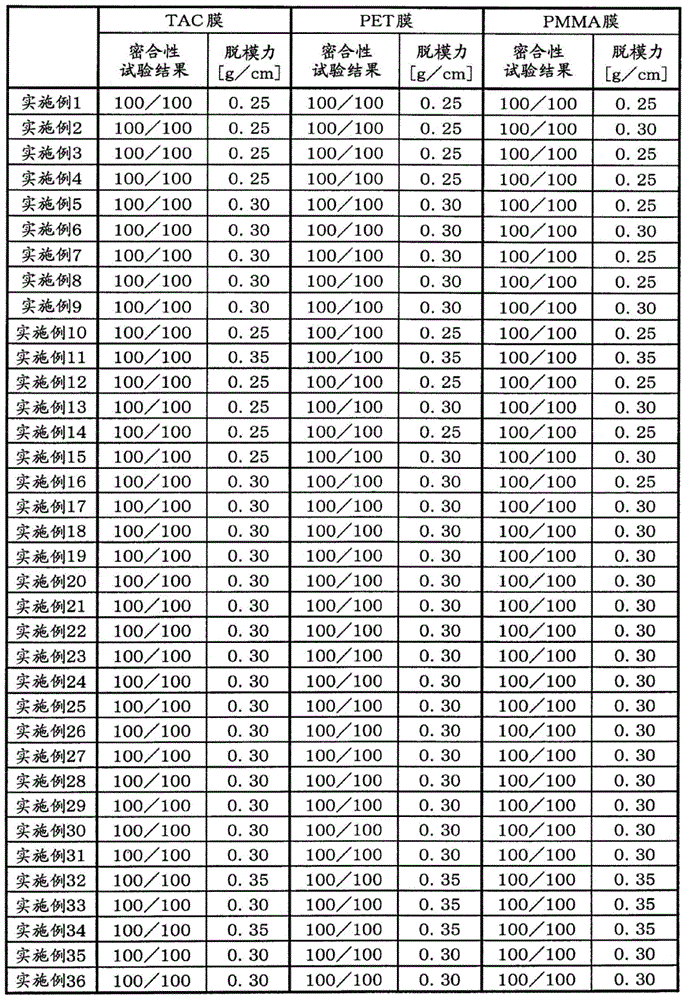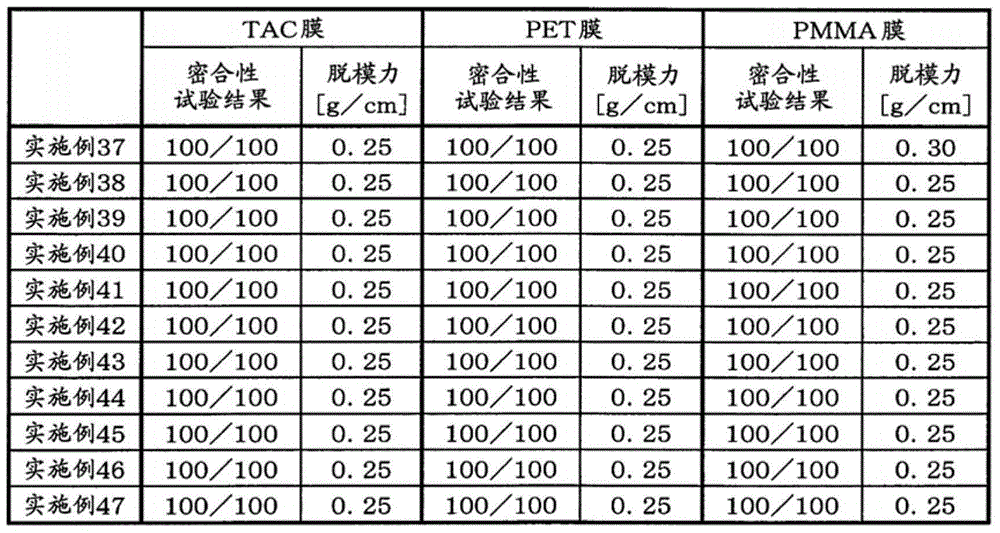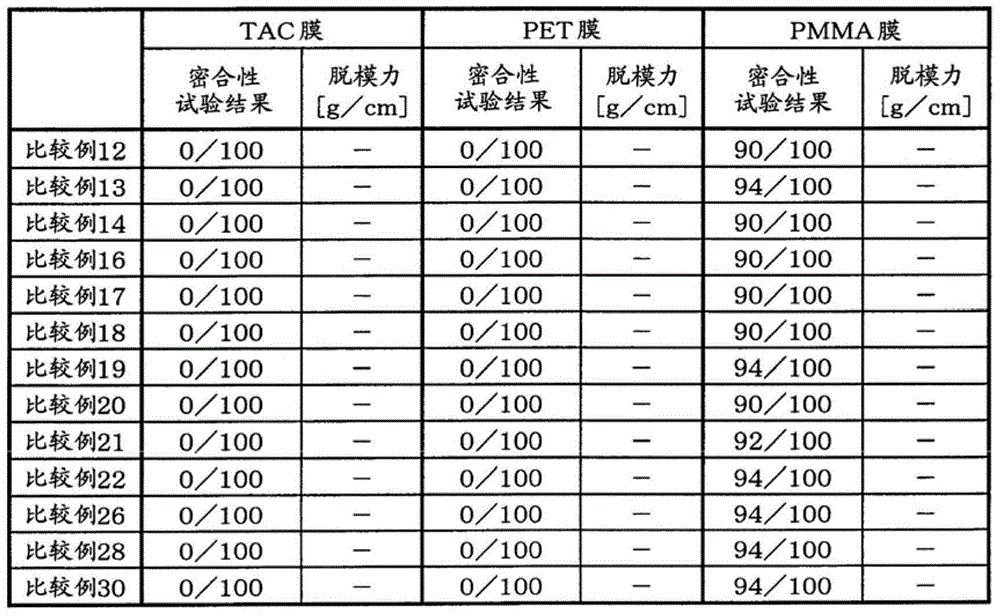embossing material
A film substrate and compound technology, applied in thin material processing, nanotechnology, coating, etc., can solve the problem of not being able to obtain the target pattern shape, etc., and achieve mold release force suppression, low mold release force, and high stability Effect
- Summary
- Abstract
- Description
- Claims
- Application Information
AI Technical Summary
Problems solved by technology
Method used
Image
Examples
Embodiment
[0131] Hereinafter, although an Example and a comparative example are given and this invention is demonstrated in more detail, this invention is not limited to these Examples.
[0132] In addition, each measuring device used in the examples is as follows.
[0134] Device: Electrodeless uniform irradiation device QRE-4016A manufactured by Oak Manufacturing Co., Ltd.
[0135] [UV-visible spectrophotometer]
[0136] Device: SHIMADSUUV-3600 manufactured by Shimadzu Corporation
[0137] [Adhesion test]
[0138] Standard: JISK5400
[0139] [Automatic Film Maker]
[0140] Device: KT-AB3120 manufactured by Cortec Co., Ltd.
[0141] [Removal of molds]
[0142] A nickel-made motheye pattern mold with a pitch of 250 nm and a height of 250 nm (manufactured by Inox Co., Ltd.) and a silicon substrate used in the photocurability test described later were immersed in Nobeck (registered trademark) HFE-7100 (hydrogen fluorine Ether, Sumitomo Three-Em Co., Ltd...
Embodiment 2
[0147] Imprint material A2 (solid content: 50% MEK solution) was prepared in the same manner as in Example 1 except that A-200 in Example 1 was changed to A-400 (manufactured by Shin-Nakamura Chemical Industry Co., Ltd.).
Embodiment 3
[0149] Imprint material A3 (solid content: 50% MEK solution) was prepared in the same manner as in Example 1 except that A-200 in Example 1 was changed to A-600 (manufactured by Shin-Nakamura Chemical Industry Co., Ltd.).
PUM
| Property | Measurement | Unit |
|---|---|---|
| boiling point | aaaaa | aaaaa |
| boiling point | aaaaa | aaaaa |
| boiling point | aaaaa | aaaaa |
Abstract
Description
Claims
Application Information
 Login to View More
Login to View More - R&D
- Intellectual Property
- Life Sciences
- Materials
- Tech Scout
- Unparalleled Data Quality
- Higher Quality Content
- 60% Fewer Hallucinations
Browse by: Latest US Patents, China's latest patents, Technical Efficacy Thesaurus, Application Domain, Technology Topic, Popular Technical Reports.
© 2025 PatSnap. All rights reserved.Legal|Privacy policy|Modern Slavery Act Transparency Statement|Sitemap|About US| Contact US: help@patsnap.com



